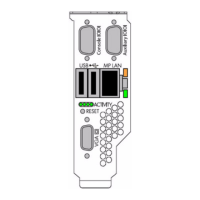1 Overview
The SmartSetup Scripting Toolkit (SSTK) enables you to deploy a large number of HP Integrity®
servers rapidly and efficiently. Using SSTK, you can develop custom scripts that simplify server
deployments by automating various hardware configuration and software installation operations.
SSTK can set specific EFI boot variables, create disk partitions, and tie into the standard unattended
installation process to install the OS and selected applications.
Introduction
When a widget needs to be mass produced, the usual trick is to create a model of the widget and
then clone it using an automated process. To produce a thousand CDs, for example, a CD
manufacturer first creates a master CD and then copies it a thousand times using a replication
process. In the movies, a mad scientist extracts the DNA from a model subject and, with some
spectacular special effects, clones an army of replicants. Although you are unlikely to be in the
business of replicating CDs or people, your approach to deploying a large number of servers is
likely to be similar.
To deploy a hundred identical HP Integrity servers quickly and efficiently, you would set up a
model server manually and then clone this setup (Figure 1-1) on the remaining ninety nine servers
using an automated replication process. Without automation, the deployment of the hundredth
server would be just as time-consuming, laborious, and error-prone as the first. But by using an
automated replication process, you would significantly reduce the time, effort, and errors involved
in such high-volume server deployments.
Figure 1-1 Clone a Server Setup
Automated server replication is the basis for the Smart Setup Scripting Toolkit. The SSTK enables
you to develop a process of replicating the hardware configuration of a model server and attached
storage array controllers. The SSTK also ties into standard, unattended installation processes for
the Windows® OS and applications.
Server deployments using SSTK involve four main stages: First, you set up a model Integrity
server. Next, you create a server profile based on the model server. Then, you create a scripted
process to apply the server profile onto a target server. Finally, you launch this process to replicate
the server profile on hundreds of servers.
Introduction 15

